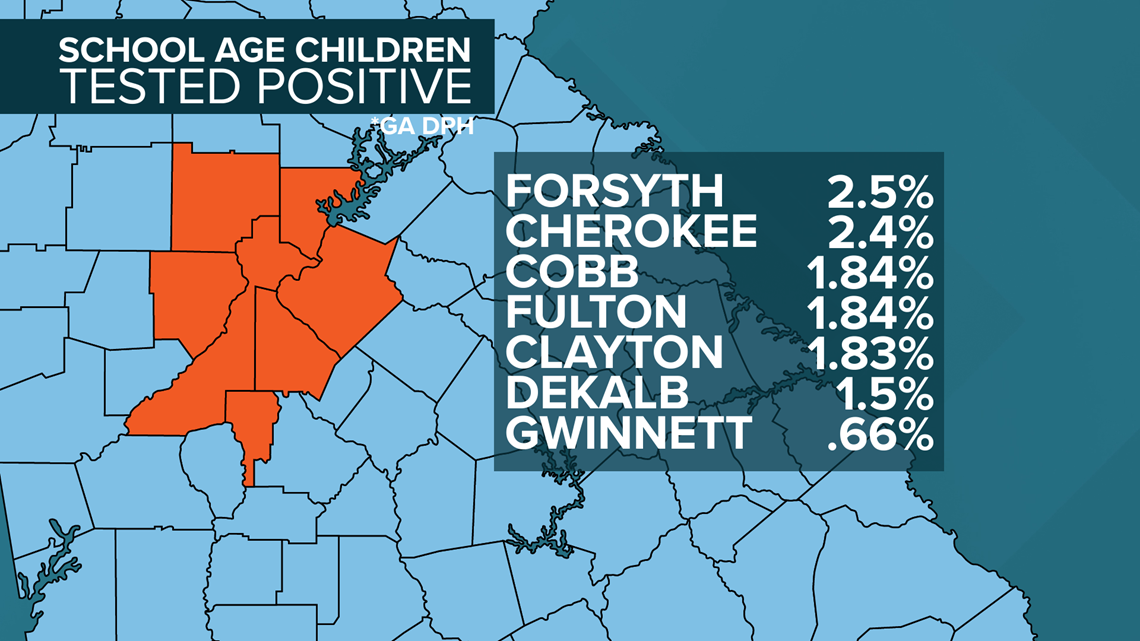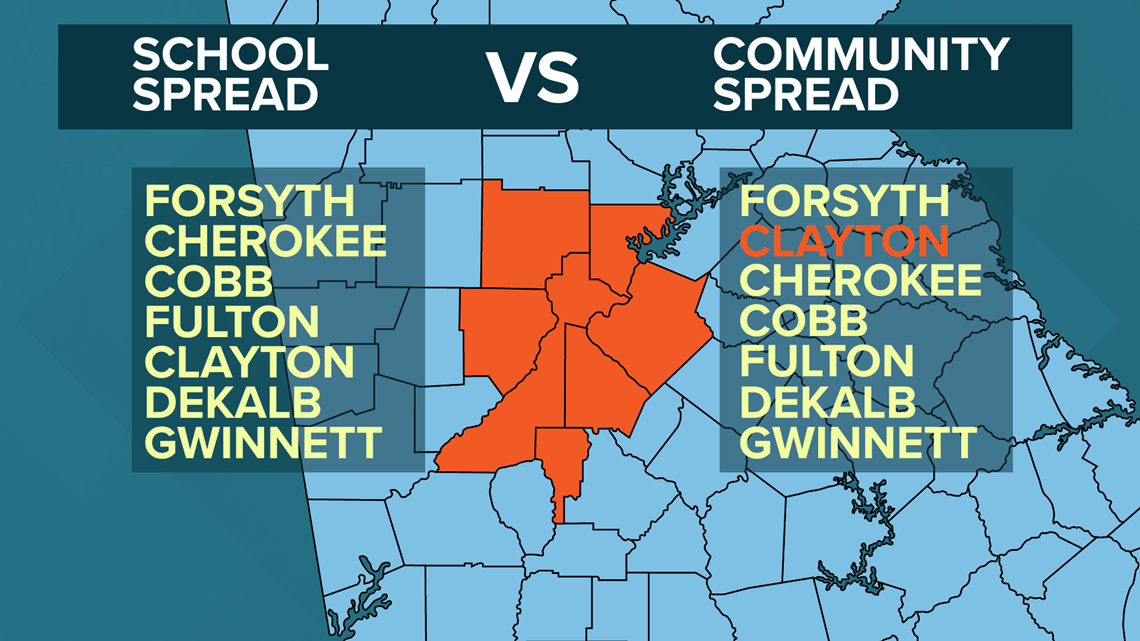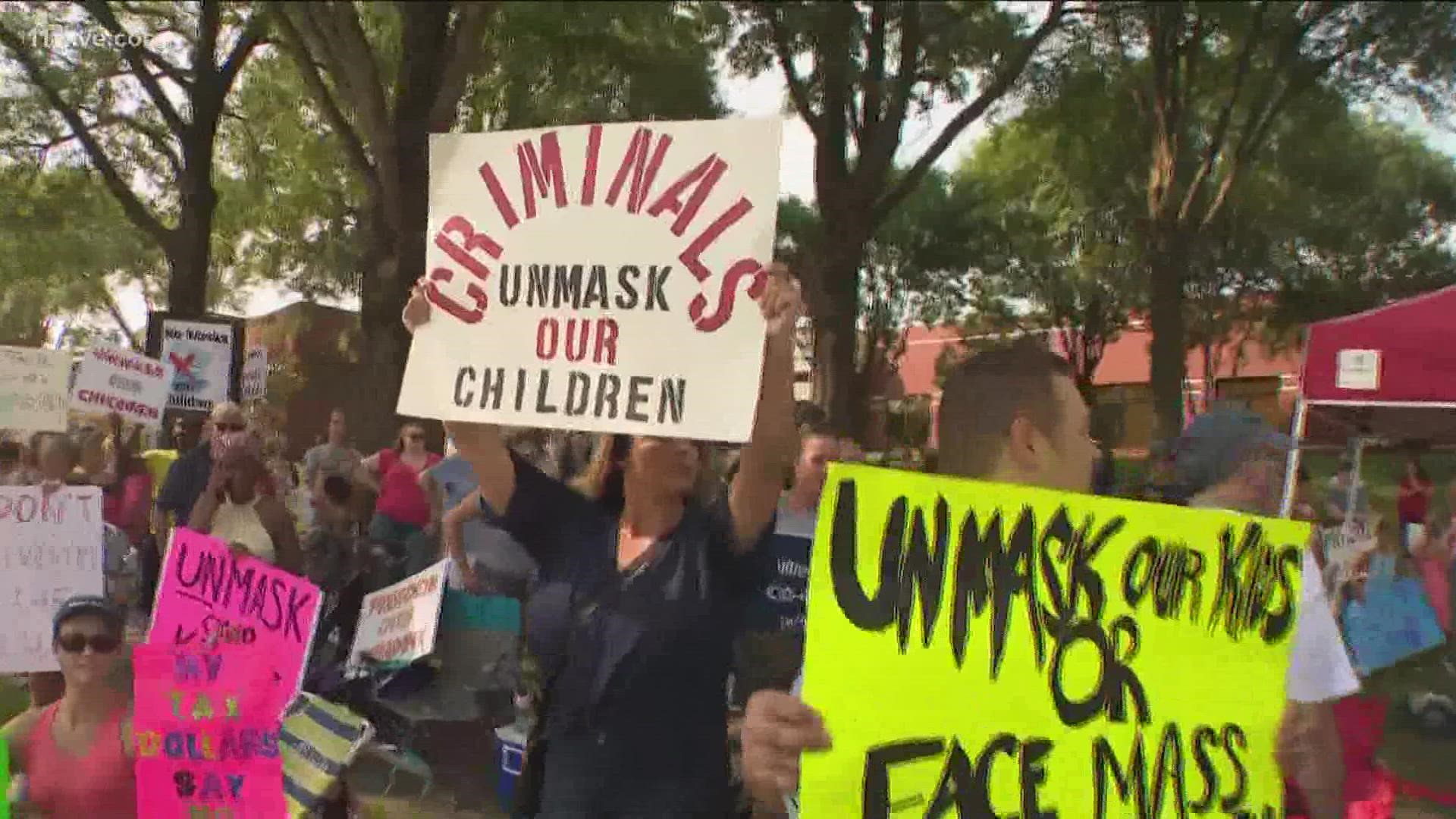ATLANTA — COVID-19 has ignited a number of debates around mandates -- from vaccines to masks. Not all school-aged children are eligible for the shot. But now that every metro district has been in school at least one month, we wanted to know what impact masks were having on inside the classroom.
Every school district is reporting cases a bit differently so to be consistent, 11Alive investigator Rebecca Lindstrom chose to analyze data from the state's Department of Public Health (DPH).
We calculated the number of new COVID-19 cases in each county for school-age children since the start of classes against the population of the largest district in each case. By that measure, the districts that did not mandate masks – Forsyth, Cherokee, and Cobb counties – were among those on top.


Fulton County, which does have a mask mandate, had the same percentage of spread as Cobb County. That could be because the district started school a full week later, at a time when the impact of the virus was climbing each day.
Dr. Richard Rothenberg, from Georgia State University's School of Public Health, analyzed 11Alive's data.
Rothenberg warns there are a lot of variables that make the picture incomplete. For example, how many wore masks even though they didn’t need to? Or of those mandated, how many wore masks incorrectly? And what impact did smaller city schools have on these numbers, especially those that chose a different policy.
For example, Marietta City Schools has a mask mandate. Cobb County School District does not. Marietta has fewer than 9,000 students compared to Cobb’s 112,097. That’s why Dr. Rothenberg says it’s important not to get tied up in exact numbers but instead study the trends.
“It’s a complex situation,” Rothenberg said. “You’ve got two things happening at the same time. You don’t quite know what their connection is, but you see whether or not they go in the same direction. Masks go up, cases go down.”
Dr. Rothenberg says larger scale studies that have tried to control for some of these variables have found wider gaps in the success of masks at reducing spread. Either way, he again stresses, look at trends.
“If you see it over and over again, it begins to convince you that yeah, this works.”
What the data does seem to reflect, is the notion that what happens in the community – happens in the schools.
“Kids go to school, they go back home. And whoever is at home is then exposed to whatever the kids were exposed to. Teachers go back to their homes. It’s not as if people are sequestered in one location. There’s high mobility in one area,” Rothenberg said.


When we look at community spread, essentially everyone that’s living in the county, the percent of the population infected goes in the same order, except Clayton County. Why?
Perhaps it is because by the time school started, Clayton had the lowest percentage of its population vaccinated in the metro -- only 42.4%. That’s compared to Fulton and Cobb counties with more than 57% of its population vaccinated. We also know the virus has had a greater impact on the Black community.
RELATED: Cobb County School District decides to keep masks optional, makes quarantine policy adjustments
Georgia DPH doesn’t publicly provide demographic data on children hospitalized, but the counties with the highest number of children needing hospital care were Fulton, Clayton, and Dekalb counties.
“I think demographics play an enormous role. And the age distribution is going to be very important,” explained Dr. Rothenberg. “Children appear to be the ones who are driving a lot of this right now.”
Dr. Rothenberg believes children are key to the virus’ spread because a large portion of them are not eligible for the vaccine.
In every county, the percent of students impacted was greater than the percent of the population as a whole. In Forsyth and Cherokee counties, the spread was almost double.
RELATED: Marietta City Schools to require masks after tracing handful of COVID cases to school transmission
Some will look at the numbers and argue they’re so small – two percent of students getting COVID-19?
It’s why some parents have filed lawsuits in places like Gwinnett County, believing the end doesn’t justify the means. Just know these small percentages add up. Of the seven metro counties studied, in just the first month, 19,438 children got sick with COVID-19. That means at best, they missed a few days of school. At worst, they got seriously ill. According to DPH, 94 of these children had to go to the hospital for treatment.

